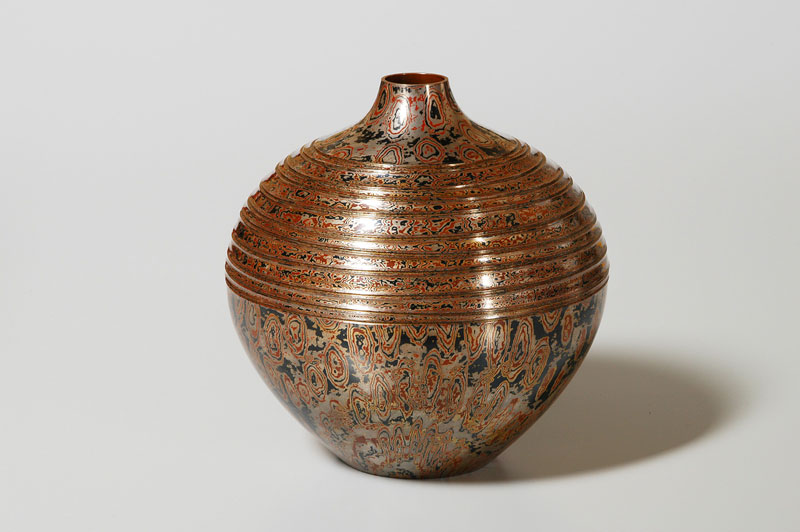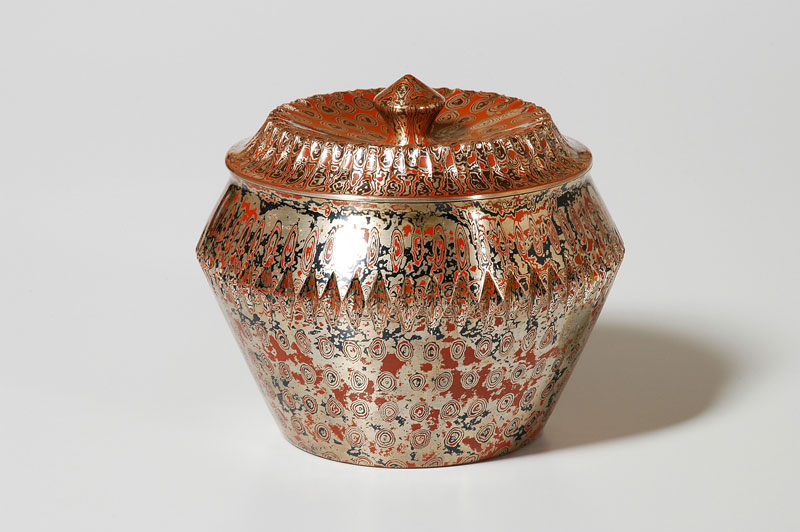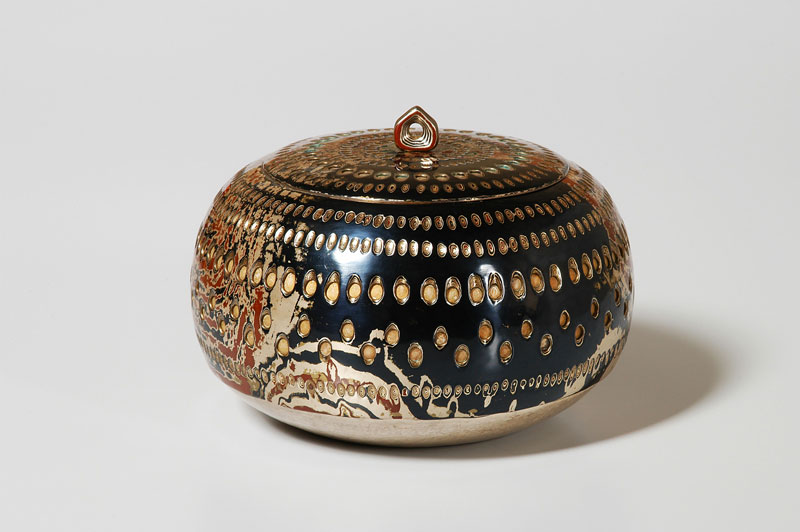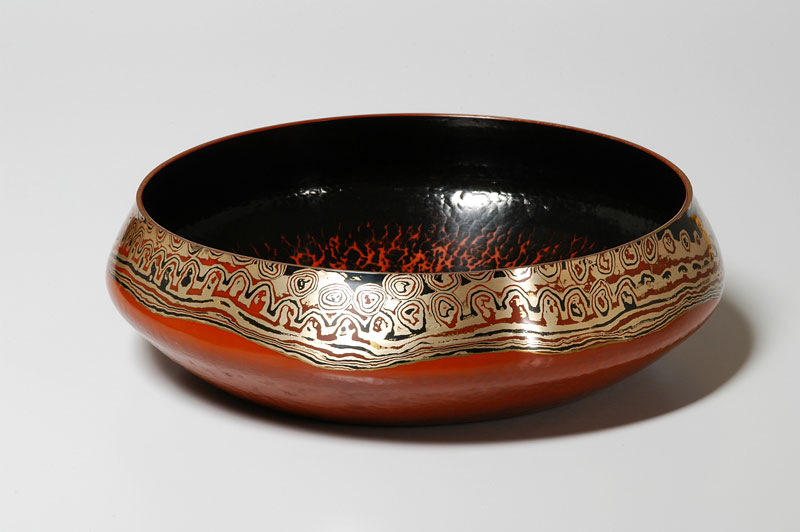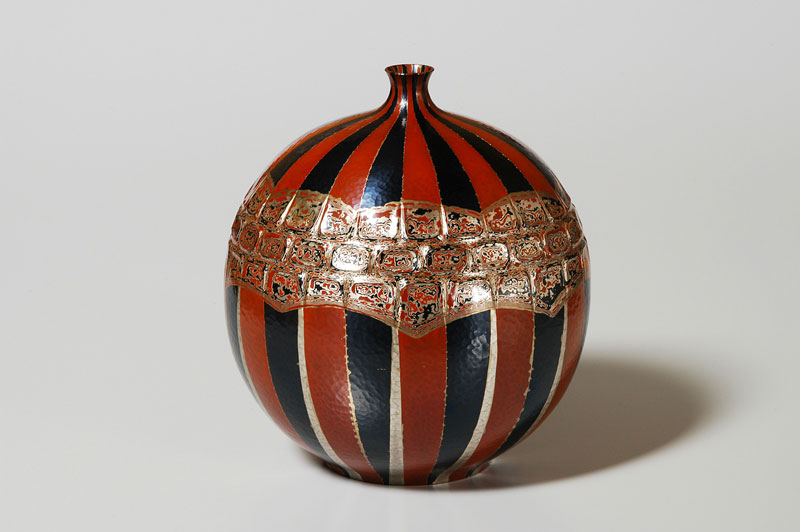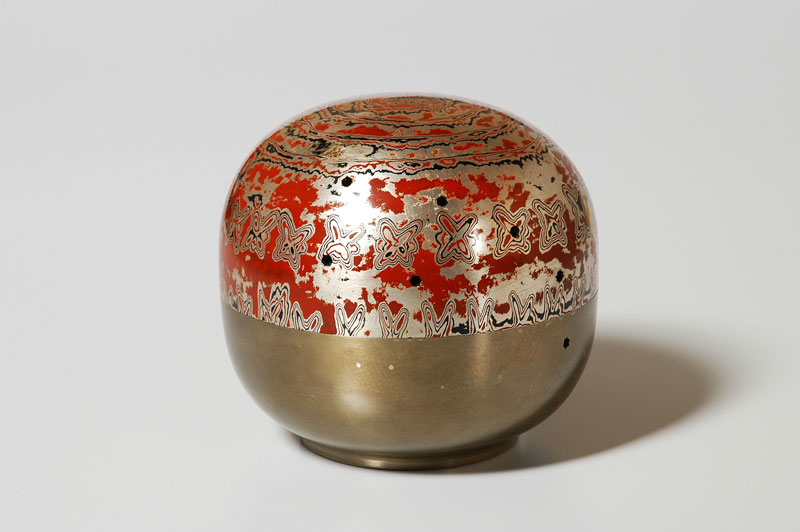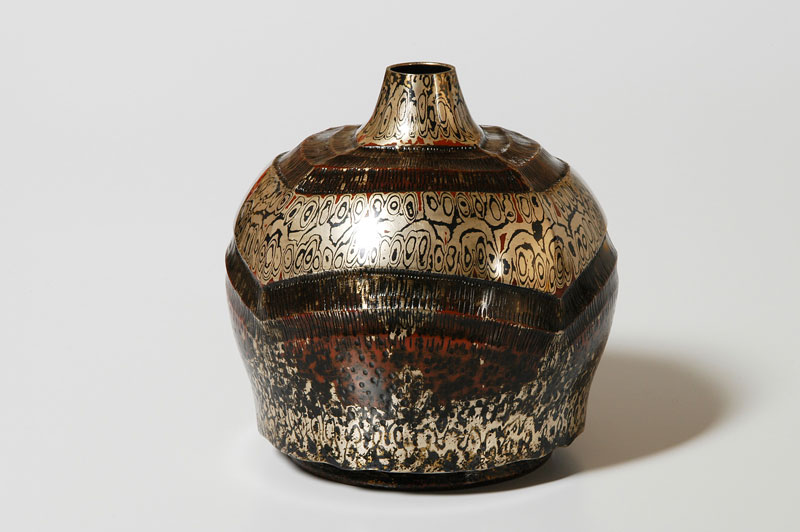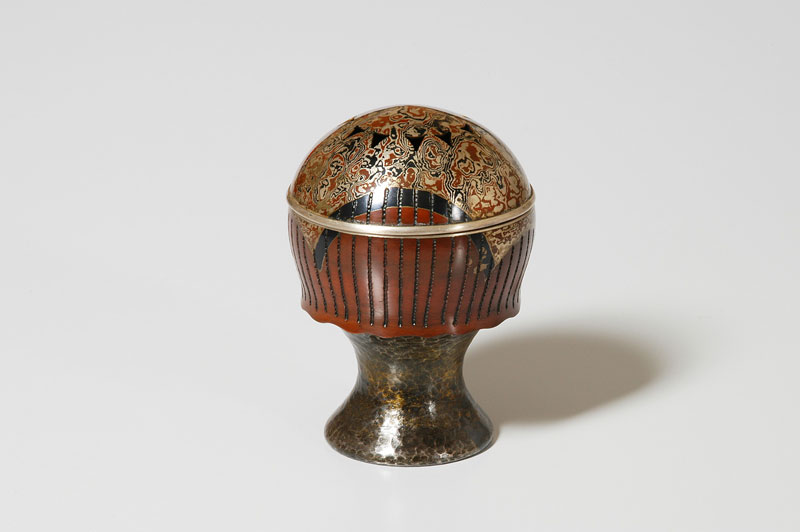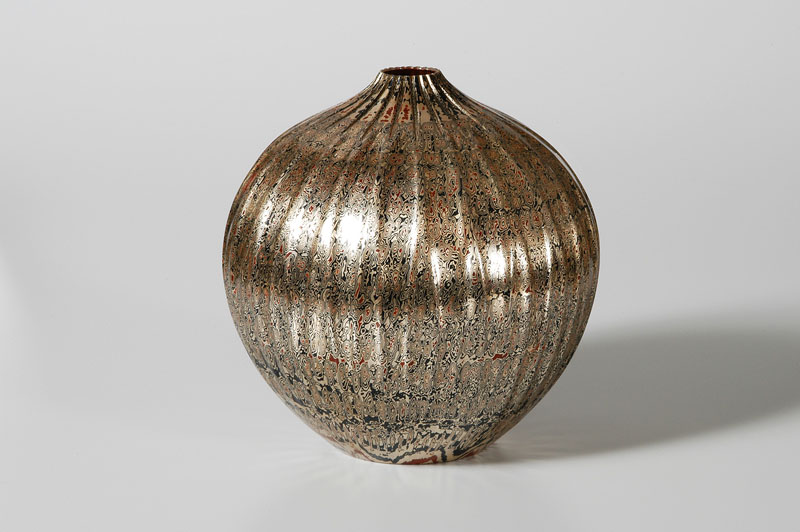Living National Treasure
Norio Tamagawa
Mokumegane
‘ All things are accomplished through perseverance. ‘
Beautiful speckled patterns of mokumegane.
In pursuit of this original beauty, a block of layered metal requires simply to be endlessly hammered.
Relentless physical strength, concentration, and force of will.
In the end however, these precious patterns are merely secondary.
The true joy for the artisan is in the personal struggle with metal itself.
- Norio Tamagawa
What is Mokumegane?
Mokumegane is a metal processing technique developed in Japan around 400 years ago during the early Edo period (1603 - 1868). The unique process involves layering metals one on top of the other in order to create intricate wood-grain patterns.
Norio uses between twenty to thirty plates of copper, silver, and shakudo (3% gold copper alloy) in his works. He layers and fuses the metals together to create one solid block. The billet is then rounded and hammered flat. The sheet is then given its intitial woodgrain design by engraving and boaring into the surface to uncover the metal layers underneath. The sheet is pounded and into shape, giving it its final form.
By perfectly manipulating the metals, the layers of contrasting colors mix, expand, and create a complex and intricate pattern. His mastery of this unique and difficult metal working technique has established Norio Tamagawa as one of the greatest mokumegane artisans in the world.



